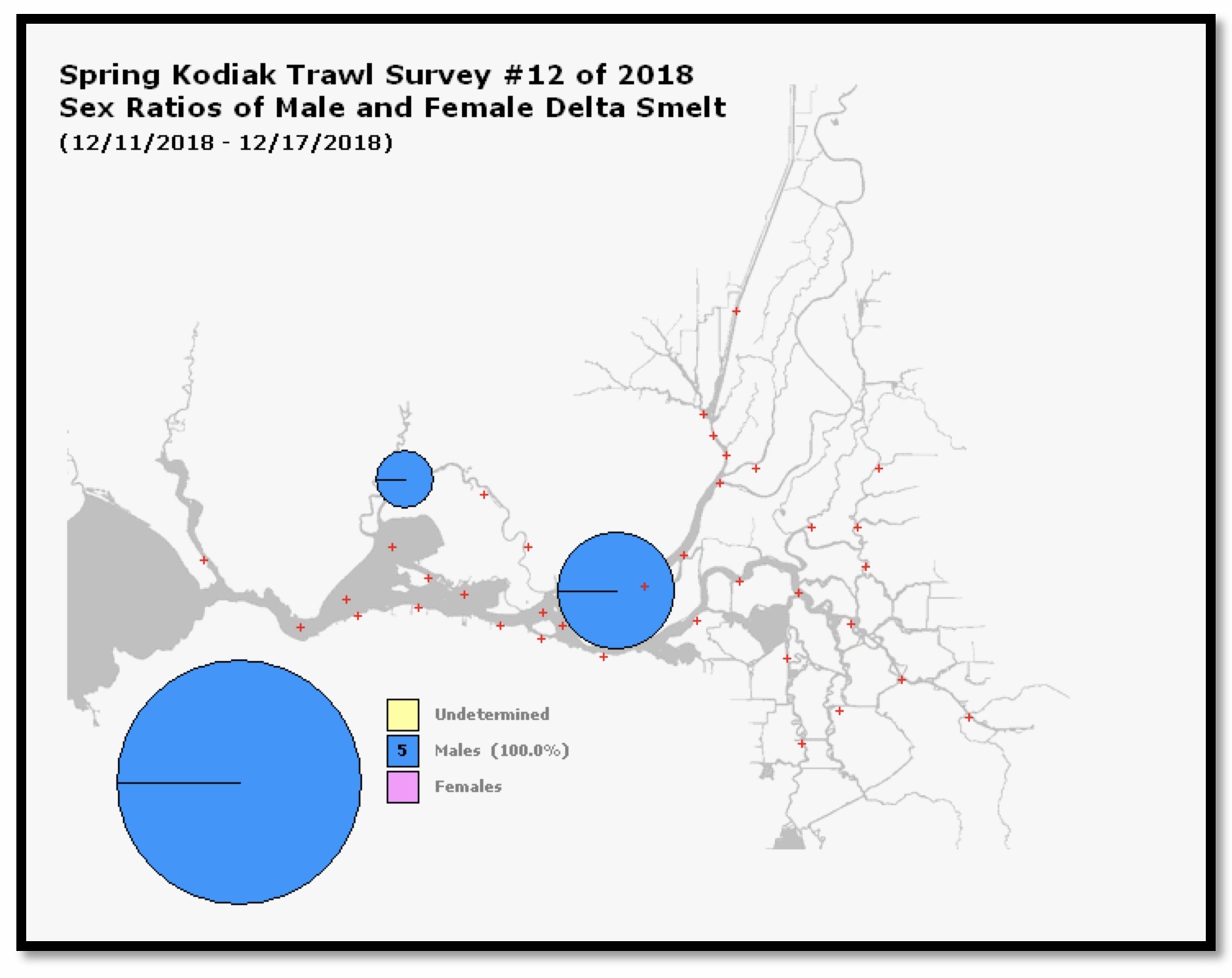The Interior Department’s US Fish and Wildlife Service (USFWS) issued a memo on January 30, 2019 that revised the federal take permit for Delta smelt for the combined operation of the Central Valley Project and the State Water Project. The memo stated:
“It has become clear over the past several years that surveys are reaching their detection limits given the declining population of delta smelt, and in 2018, the FMWT [fall midwater trawl] Index was zero, indicating that the FMWT Index may no longer provide an accurate predictor of incidental take.”
The new take criteria are now the old action criteria of limiting Old and Middle River (OMR) reverse flows during the winter and spring under certain conditions. When smelt would normally be expected to be present, OMR flows would be restricted to being no more negative than -2000 or -5000 cfs. The new “surrogate” criteria essentially keep the south Delta pumping plant operations at status quo until such time as the ongoing reinitiated Endangered Species Act (ESA) consultation is completed and new take permits are issued.
The importance of the rule change is diminished by the fact that Interior (combined action of US Bureau of Reclamation and USFWS) has not enforced the rules to protect Delta smelt. The state of California has also failed to protect Delta smelt as well as California ESA-listed longfin smelt. One only has to review recent early winter information to see this is the case. After the first Delta outflow pulse at the beginning of December 2018, outflow fell to only 4000 through mid-December (Figure 1). High exports (Figure 2) contributed to the low outflow and exceptionally low (negative) OMR flows (Figure 3).
These low outflows and high exports created very high risk conditions for the two smelt species. What few Delta smelt remained were observed in the west Delta (Figure 4). Longfin smelt were spawning in Suisun Bay and the west Delta (Figures 5 and 6).
Smelt are not being protected. The Smelt Working Group mandated under the Federal and State take permits has been inactive and has not provided mandatory guidance. New take permits are needed immediately to protect the two listed smelts. The State Water Board, in revisiting water right permits and water quality standards for the Delta, should also adequately protect the listed smelts. To protect the smelts, the OMR limit for December should have been no more negative than -2000 cfs. The export-to-inflow limit criteria for December should be 35%, not the present 65%. December outflow minimums should be 6000-8000 cfs, not the present 3500-4500 cfs.

Figure 1. Delta outflow 11/10/18 to 1/8/19. Note very low outflow in early December after initial rainfall pulse.

Figure 2. State project exports at Clifton Court December 2018 to February 2019. Federal exports were near maximum (3500-4200 cfs) for most of period.

Figure 3. OMR flows November 2018 to January 2019.

Figure 4. December 2018 Kodiak trawl survey catch of Delta smelt.

Figure 5. December 2018 midwater trawl longfin smelt catch.

Figure 6. Smelt Larvae Survey #1 for 2019 catch of newly hatched longfin smelt.

















